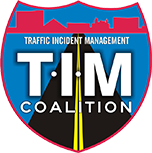
Depending on the time of day and location, incidents create 55-60% of the congestion on highways in Nevada.
Identifying the severity and location of a crash can significantly shorten the response and clearance times, it may even save lives.
An accident that occurs as a result of congestion or distraction from a prior crash is referred to as a secondary accident.
Exact figures on the number of secondary accidents are difficult to calculate. Preliminary results of a study by UNLV indicate that as many as 22% of all incidents in the Las Vegas region are the result of an earlier crash.
Secondary crashes can potentially be more serious than the original crash as motorists become impatient and distracted with their driving. National studies show that as many as 18% of secondary crashes result in a fatality.
Every minute a crash remains in traffic
NEVADA TOWING & RECOVERY INCENTIVE PROGRAM (T.R.I.P.)
The TRIP program for Nevada is currently suspended by NDOT. For any questions regarding the program, please contact:
David Strawn / Nevada TRIP Operations Manager (Parsons)
Email: david.strawn@parsons.com
Phone: (702) 885-4944

